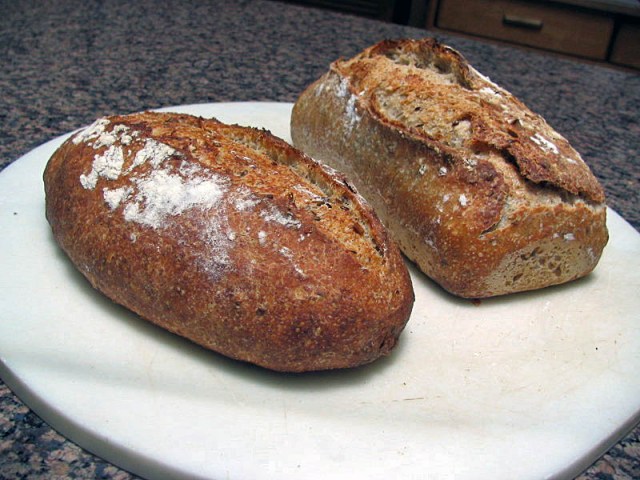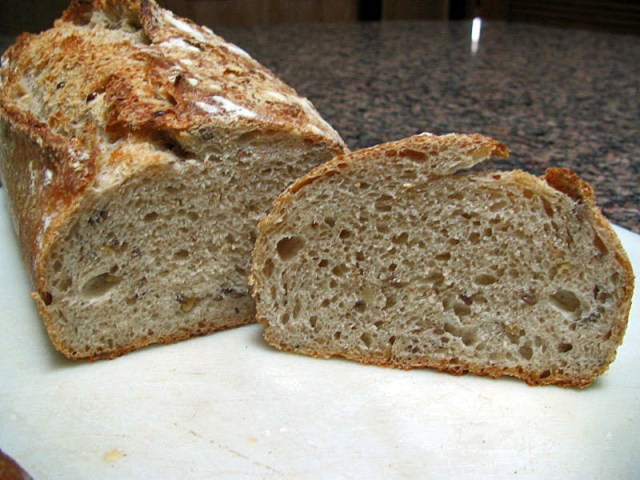Before I even start talking about last weekend’s bread, I urge you to visit Joanna’s blog to see her wonderful article about one of my favorite bread baking books, Bread. Her post is a must-read for anyone who might feel intimidated by Hamelman’s masterpiece. Great job, Joanna!
After the cracked wheat sandwich bread, our cravings for bread with grains incorporated in the dough only intensified. As usual, on Thursday evenings I start considering the possibilities for baking in the weekend, so I grabbed Hamelman’s book, and opened it at random. To my delight, the recipe on that particular page read: Five Grain Levain. Seemed too fitting to ignore. Plus, for a sourdough bread, the recipe could not be much simpler, the secret behind its simplicity lying in the use of commercial yeast to speed up fermentation. All I had to do the day before was soak the grains, and give a final feeding to my starter.

FIVE GRAIN LEVAIN
(adapted from Hamelman’s Bread)
for the liquid levain
4 oz bread flour
5 oz water
2 Tbs mature sourdough starter
for the grains mixture
1.5 oz cracked rye
1.5 oz flaxseeds
1.2 oz sunflower seeds
1.2 oz oats
6.5 oz boiling water
1/2 tsp salt
for the final dough
8 oz bread flour
4 oz whole-wheat flour
4.2 oz water
1/2 Tbs salt
1/2 tsp instant yeast
all soaker prepared
all liquid starter prepared
Prepare the liquid levain 12 to 16 hours before you plan to start the dough. Let it stand at room temperature, preferably around 70 F. When you make the levain, prepare the grains too, by pouring boiling water over the grains and the salt in a small bowl. Leave at room temperature.
Make the dough by adding all the ingredients into the bowl of a KitchenAid type mixer, knead on first speed for 3 minutes, then increase the speed to the second level and mix for 5 minutes. Place the dough in a slightly oiled bowl, cover, and let it ferment for 1.5 hs, folding the dough on itself three times after 45 minutes to increase elasticity.
Shape the dough as a boule or batard, place in a banetton or appropriate container of your choice, and let it rise for 1 hour.
Bake at 460 F for 40 to 45 minutes, generating steam in the beginning, by either covering the dough with an inverted roasting pan, or adding ice cubes to an empty pan at the bottom of your oven. Allow it to cool completely before slicing.
ENJOY!
to print the recipe, click here
Comments: This loaf of bread lasted 5 days, and held up pretty well up to its end. Usually, after the second day we opt for toasting, but this particular loaf was good enough with a very brief warming in our electric oven. We kept it at room temperature over the cutting board with the cut side down, and sliced only what we were going to consume right away. It goes well with pretty much anything, from ham to turkey, jam to peanut butter, or butter with paper thin slices of radishes and a little sea salt… delicious!
I am submitting this post to Susan’s Yeastspotting event…
ONE YEAR AGO: The Nano-Kitchen
TWO YEARS AGO: Kaiser Rolls




















